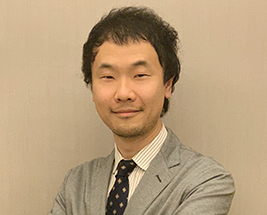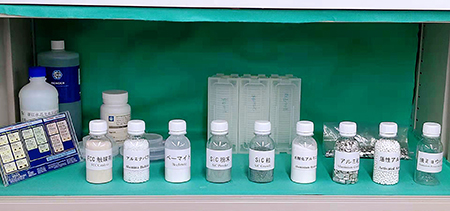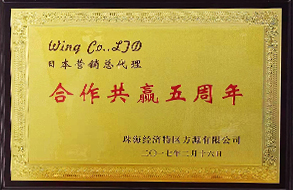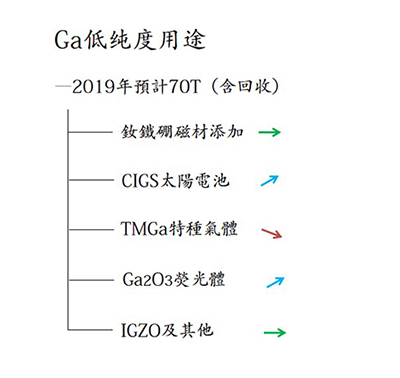Fanya's 191kg gallium auction not to weigh on market prices
----Interview with Wakaaki Uchi
Director of Overseas Sales Department
WING
- Founded in 1993 and headquartered in Tokyo, WING is a comprehensive company focusing on rare metals, industrial functional materials, energy rare earths, industrial and semiconductor equipment and compound semiconductor chip. The company has been the largest importer and exporter of gallium metal in Japan since 2015. It's also engaged in the import and export business of GaAs, GaN, TMGa as well as the next generation compound semiconductor Ga2O3 and other gallium extended products.
- Asian Metal: Thank you for accepting our interview, Mr. Uchi. Please give us a brief introduction of the main business of your company and your own experience.
-
- Mr. Uchi: Firstly, thanks for your invitation. As mentioned earlier, WING is a comprehensive company and engaged in the business of rare metals and other products. As the largest gallium metal trader in Japan, WING develops all-round value-added gallium metal materials and takes the lead in the business of downstream gallium products.
-
- I spent my early years in CHINALCO Shanxi Branch and learnt about gallium metal under the influence of my father. I joined WING after graduation and began to promote gallium metal in Japan with the support and assistance of Zhuhai SEZ Fangyuan Inc. We started gallium metal business when the price was high and gradually gained a foothold after experiencing the continuous price downtrend, market reshuffle, Fanya Metal Exchange's case, environmental protection management and other unfavorable conditions. Later on, supported by Guangdong-based Vital Materials and Japanese customers, we continued deepening business and began to sell gallium related products.
-
- Asian Metal: Japan is one of the major consumers of gallium metal. Could you talk about the current situation of Japanese gallium metal consumption industry?
-
- Mr. Uchi: Japan is a major gallium consumer and its industry status quo and classification are similar to those of other major consumers. However, the industry pattern in Japan is slightly different from that of others due to loss of some initial products and production lines and the rising of some emerging industries. The Japanese market is classified in term of purity, including high purity (6N and higher) and low purity (below 6N).
-
- High purity product is usually used to produce compound semiconductor materials, HVPE MBE, high purity metal doping materials and superconducting materials. In particular, compound semiconductor materials, such as GaAs, GaP, GaN and Ga2O3 chip materials, take the highest share. In the golden days, Japan consumed more than 100 tons of GaAs per annum, including recycling.
-
- In recent years, Chinese GaAs producers emerged and took an increasing market share, so major Japanese producers cut production or terminated production, which greatly impacted the consumption of gallium. Benefiting from rising and application of the third generation wide bandgap semiconductor, demand for GaN and Ga2O3 is mounting. Besides, booming VCSEL market results in better high-end GaAs market. Thus, the negative impact is offset to some extent and we expect an annual consumption volume of about 80 tons, including recycling, in the coming years.
-
- Low purity product is usually used to produce NdFeB magnet (as an additive), CIGS solar battery, TMGa special gas, Ga2O3 fluorescent material, IGZO and so on. It's predicted that magnet and TMGa industries are unlikely to witness great changes while CIGS, IGZO and other emerging materials would consume more gallium. The annual consumption volume in coming years is expected to be around 70 tons, including recycling.
-
- On the whole, the overall demand in Japanese market would stabilize at 150 tons in the coming years.
-
- Asian Metal: What are your advantages in doing a successful gallium metal business in Japan?
-
- Mr. Uchi: Our main advantage is that we have long-term cooperation with three largest end users. Japan attaches great importance to corporate culture, so it's quite hard for overseas suppliers to trade with end users directly. Companies like WING act as a bridge between suppliers and end users. Japanese market cannot react to price changes quickly and price is not the only factor to occupy the market. Deals that are closed at low prices are always short-term cooperation. In addition, if any quality issue rises, we can handle the return or exchanging requirements at any moment and leave no inconvenience to customers. Generally speaking, we operate steadily and win the game in the special environment.
-
- Asian Metal: China is a major gallium metal producer. How many percentages China's imports take in Japanese market every year?
-
- Mr. Uchi: It's hard to talk about import and export data as our annual statistics are quite different from those of Japanese Customs and Chinese Customs. Based on Japanese statistics, Japan imports about 70 tons of gallium metal from China every year. However, the figure includes gallium products and recycling products according to traditional Japanese statistical method. Our investigation shows that the volume of 4N gallium is about 30-35 tons. In terms of proportion, the total import volume takes about 60% of the total consumption volume in Japan and the import volume from China takes 80% of Japan's total import volume. Therefore, import volume from China takes about 45% of the total consumption volume in Japan.
-
- Asian Metal:?Gallium metal prices kept going down in Q1 2019 and stood firm in Q2 and Q3, during which the market saw inactive transactions. What are the reasons for the price trend in the past three quarters?
-
- Mr. Uchi: We firstly attribute the price drop to the overall balance between supply and demand in the market. The market was sluggish in 2019, semiconductor industry entered a low period and the China-U.S. trade friction and Japan-South Korea trade friction happened, so the demand from end users was weak. New applications of GaAs failed to offset the decline in original industry. Besides, the dim high-end LED market led to lower consumption of gas and powder materials. As a result, the supply and demand remained relatively balanced even if the supply of gallium metal decreased under the environmental protection pressure and with increasing import shares of Chinese bauxite. Therefore, as you mentioned, prices stood firm while transactions were limited.
-
- Asian Metal: Japanese market pays close attention to the auction of Fanya Metal Exchange's gallium metal stocks in Q4 2019. As far as we learn, 191.246 tons of gallium metal held by Fanya Metal Exchange was auctioned at RMB904/kg (USD128/kg) on October 28. Do you think the auction will exert impacts on Japan's import of gallium metal from China?
-
- Mr. Uchi: Fanya Metal Exchange's case receives great attention from the whole world and enters the final stage. It's a good news to the whole industry first of all. In my opinion, the auction of 191 tons of gallium wouldn't make great impacts on the market.
-
- No matter the price includes VAT or not, it wouldn't be much higher than market prices as that of indium metal. 191 tons account about a half of the world's annual consumption, so it won't influence the market for a long period. Instead, it would ease the slight supply shortage for the moment. The material to be auctioned may break the balance between supply and demand and turn the slight supply shortage to short-term oversupply. Under current circumstance, the stocks will be used up within one year.
-
- Asian Metal mentioned the "shadow of Fanya Metal Exchange" in daily communication. Gallium metal industry didn't show a normal trend these years and the "shadow of Fanya Metal Exchange" appeared when supply or demand changed. No matter market prices went up or down, market players were worried about the invisible time bomb. After the auction is held, the shadow will be removed and gallium metal industry is likely to see to a free, unfettered and normal market environment again.
-
- Therefore, we consider this auction as a turning point for the industry to be free again and march forward.
-
- Asian Metal:?Could you share with us your new projects in the coming one to three years?
-
- Mr. Uchi: In the coming one to three years, WING will continue focusing on compound semiconductor and strengthening GaAs business and pay more attention to GaN and Ga2O3 chip.
-
- We firmly believe that the next generation compound semiconductor will be widely used within five years and expect another favorable stimulation on gallium metal market.
-
- Asian Metal: Thank you again for accepting our interview and expect to see you at the 13th World Indium & Bismuth & Germanium & Gallium Forum to be hosted by Asian Metal on 12-13 March, 2020.
-
- Mr. Uchi: Thank you once more for the invitation. I'm also looking forward to the annual world forum held by Asian Metal and hope to communicate with you during the event.
-





